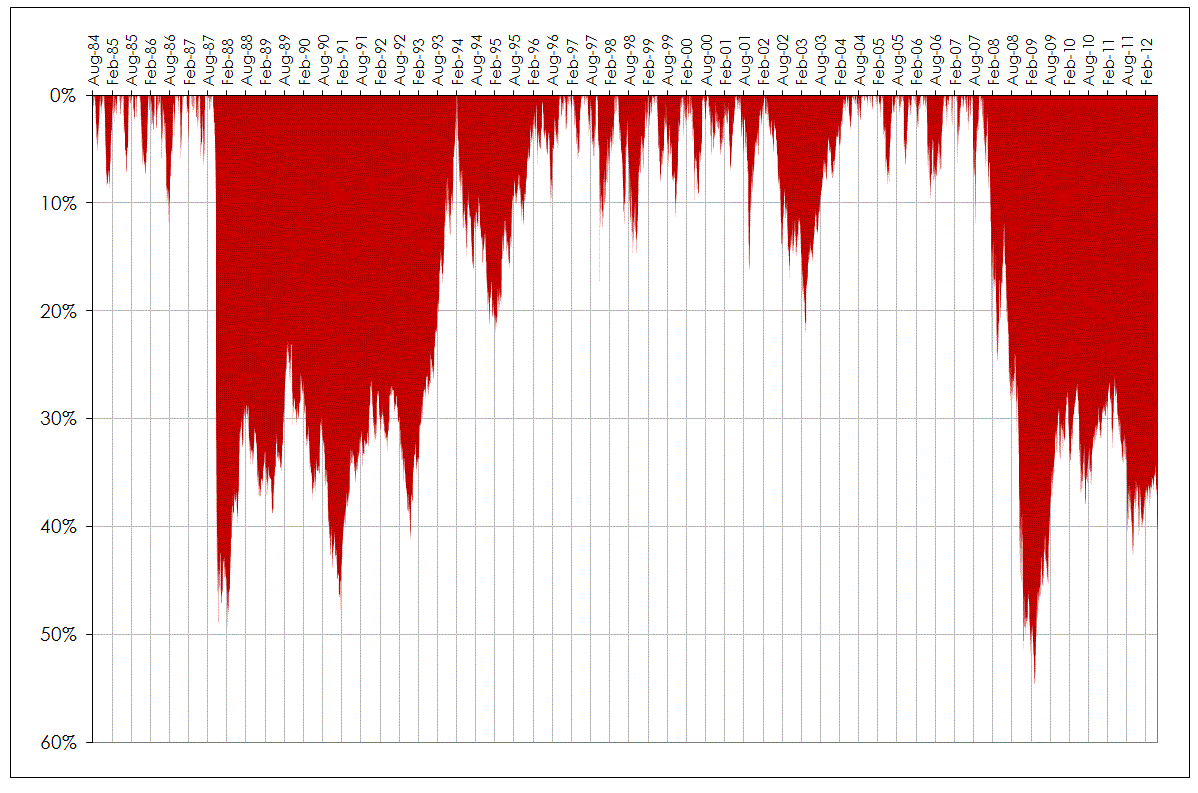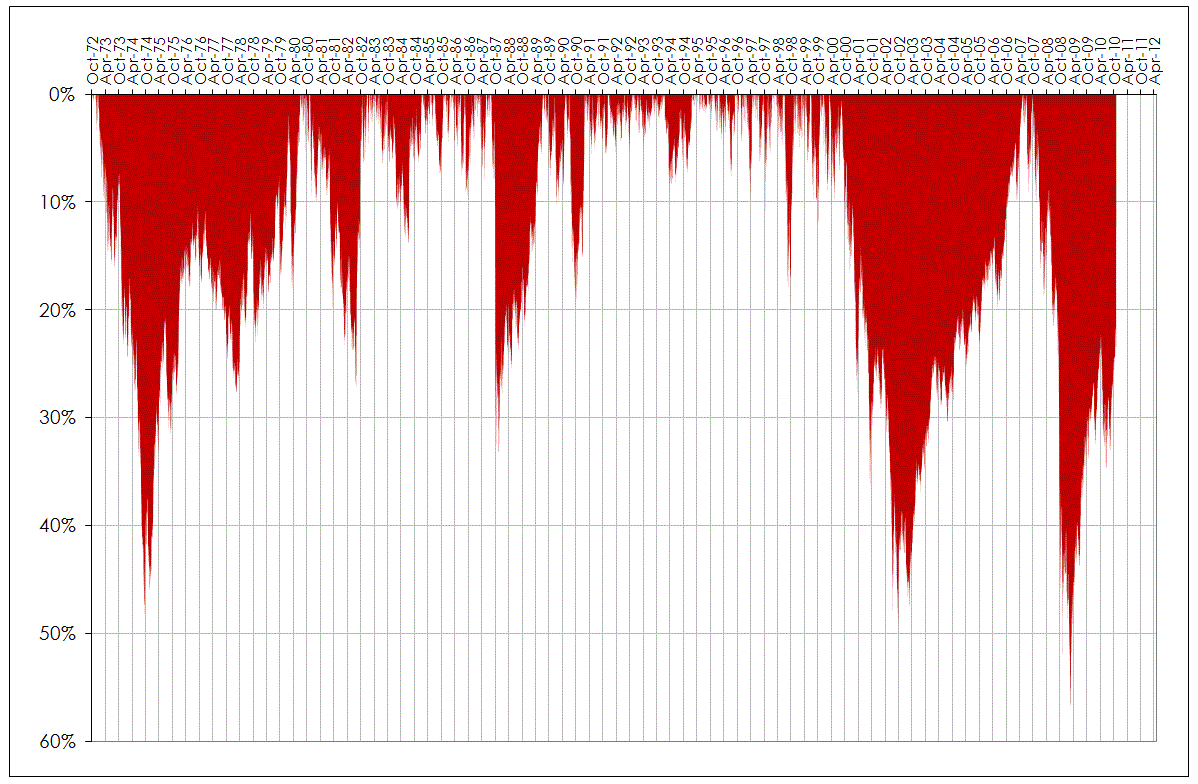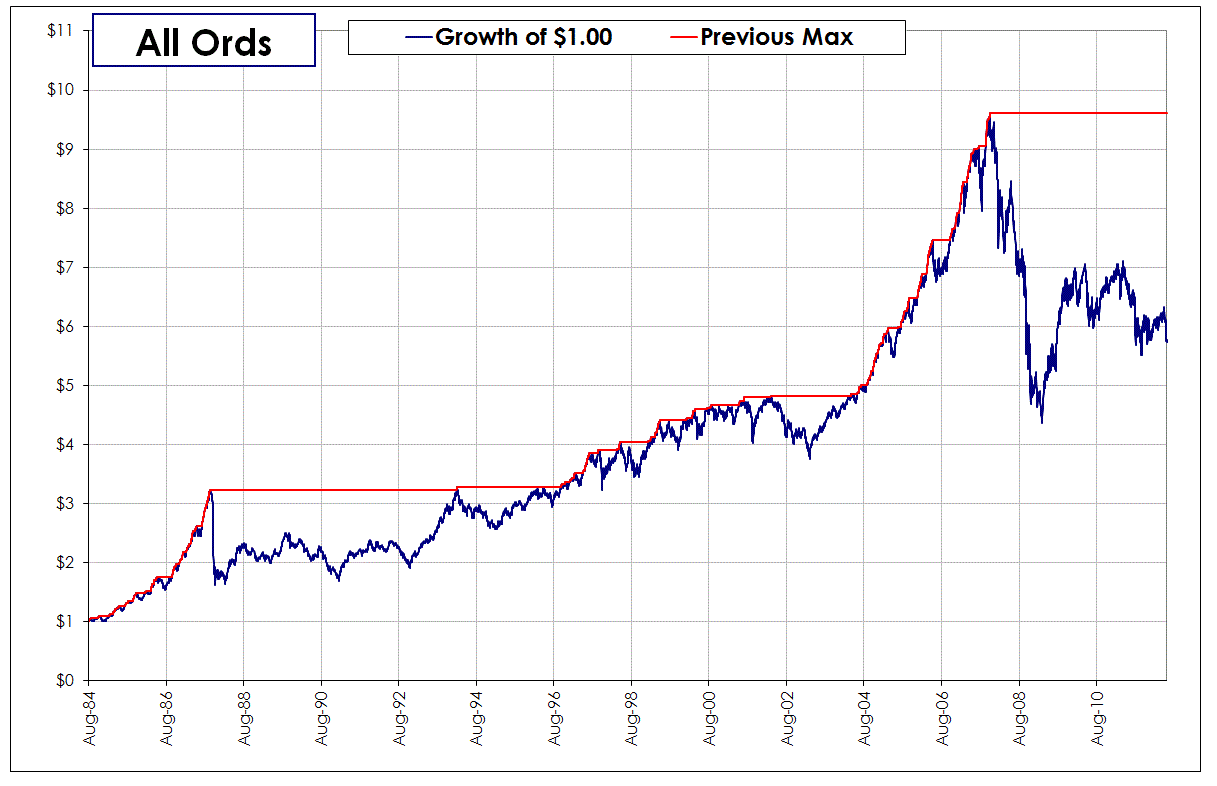Bear Market Duration
So I was sitting on my arse in front of the idiot box last night enjoying the cinematic delights of Moby Dick 2010 on the Universal channel which runs mockbuster mayhem evenings. Which if you have cable you have to check out. They are friggen hialrious. Any way in one of the ad breaks – yeah I know you pay for cable TV but it still has ads (thanks Uncle Rupert) I was channel surfing and ripped past one of the business channels with a bloke holding up five fingers and I thought here we go, we are going to get a joke about where you can stick five fingers.
Unfortunately not. Apparently this was meant to represent the average duration of a bear market and I thought…….really. Who f#4cken says so?
The inference being that the local market has been shit since 2007 and so the bear market should end this year. However, as we will see in a minute this depends on how you measure the ending of a bear market. It is also a prediction and predictions are bollocks.
Due to the issue of defining the start and end points of bear market I decided to do a bit of research. It turns out the problem is much harder to define than a simpleton broker might be able to formulate. In defining any problem you first need to resolve the terms involved in trying to solve the problem. This means defining what a bear market actually is. interestingly there is no true definition of a bear market which is intriguing since it is used in every day trader speak.
There have been some very complex approaches to defining a bear market such as this and whilst these are at least an attempt to bring some form of analytical rigour to the notion of secular trends their message is too complex and too convoluted to be of value to the average punter. Good for academia not so good for the trenches.
The most common definition of a bear market is a decline of 20% lasting at least two months and whilst this gives a reasonable initial reference point it does not tell us about when the bear market ends. Defining the point at which a bear market ends and therefore calculating an average duration is problematic and can lead to different answers.
In defining the end of a bear market I came up with two simple proposals.
1. Is it the first countrend reversal of equal percetage to the fall – noting of course that this does not recoup all the losses incurred in the fall contrary to what those in the superannuation industry believe. But it does signal and end to the initial fall.
2. Is it a movement beyond the previous high before the bear market began. This approach assumes that the market is in effect a giant equity curve and that your equity is underwater until a new equity high is made.
Both approaches have problems. Consider the chart below.
You can consider this chart to be an underwater equity curve – it looks at the time which the index spent underwater before recovering. If we apply the standard definition of a bear market being a 20% decline then we have two significant periods. Post the 1987 crash and the current market following on from the debacle of the GFC. The post 87 crash took some six years to recover and the current market shows no sign of recovering. From this we cant really draw any conclusion as to the value of an average number. The only inference we can draw is that the market goes down and sometimes it stays down for an extended period.
As always more data is better and a similar chart of the S&P 500 dating back to 1972 gives us more data points with six underwater excursions beyond our 20% threshold. But once again it doesnt really show the entire picture and it doesnt convey the same meaning as looking at an equity curve.
The chart below is an equity curve of the All Ordinaries. It is this sort of chart that conveys the length of a bear market – this time being defined clearly as a move back beyond the previous equity peak.
Despite conveying a strong picture of the time taken to surpass a former equity peak we encounter the problem of are all these pullbacks true bear markets or are they simple simples in equity. The correct answer is that most are simple pullbacks and that the only way to solve this issue is to introduce an arbitrary cut off figure such as six months. If we drop in these arbitrary cut off we can see that the average time to surpass a previous equity peak is approximately two years and nine months. I agree that an argument can be made that the the entire period from 1987 to 1996 constitutes a single bear market. As does 1999 to 2004. However, during these periods we see some move to higher equity peaks – they dont last long but they do establish a new high water mark. This is the difference between being in measurement mode versus trading mode. In measurement mode every small blip that conforms to our rules is counted. In trading mode you just look at the market and say to yourself this is shit…
The real question is does the data convey anything about what the future might hold for our market and when we might see a turn around. The answer to this is a categorical NO. The data is an interesting exercise but it is nothing more than an exercise in looking back and using a few terms to attempt to measure and define what went on in the past. It in no way says anything about the future. Some might take a false comfort from seeing that the average trough to peak duration in an equity is according to this form of measurement 2 years and 9 months but this number is ust an artefact of my data and my assumptions. The thinking might be that because our market has been in a bear market for twice this period that we are due for a new bull market. This is a false conclusion and is not in any way supported by the data.
For those looking for something to cling onto consider this. Following the 1929 crash the Dow did not make a new high until 1954. A gap of 25 years and 4 months or to be really despressing 9192 days or to be downright suicidal 794,188,800 seconds…give or take .








